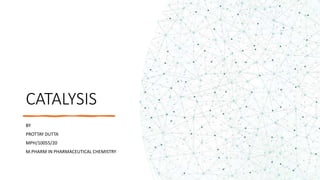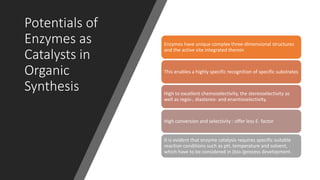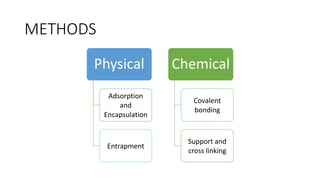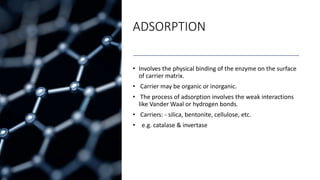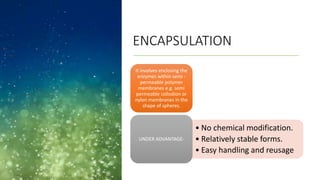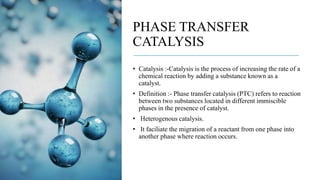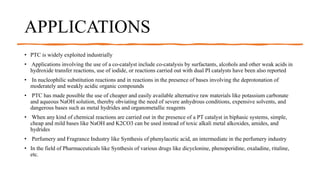This document discusses catalysis and enzymes. It begins by defining a catalyst as a substance that increases the rate of a reaction without being consumed. It states that most enzymes are proteins that act as catalysts by accelerating reactions. Enzymes have advantages like efficiency, selectivity, and operating under mild conditions. They also have disadvantages like susceptibility to inhibition and limited operating ranges. The document discusses various topics related to enzymes and catalysis including immobilized enzymes, industrial applications, and phase transfer catalysis.
